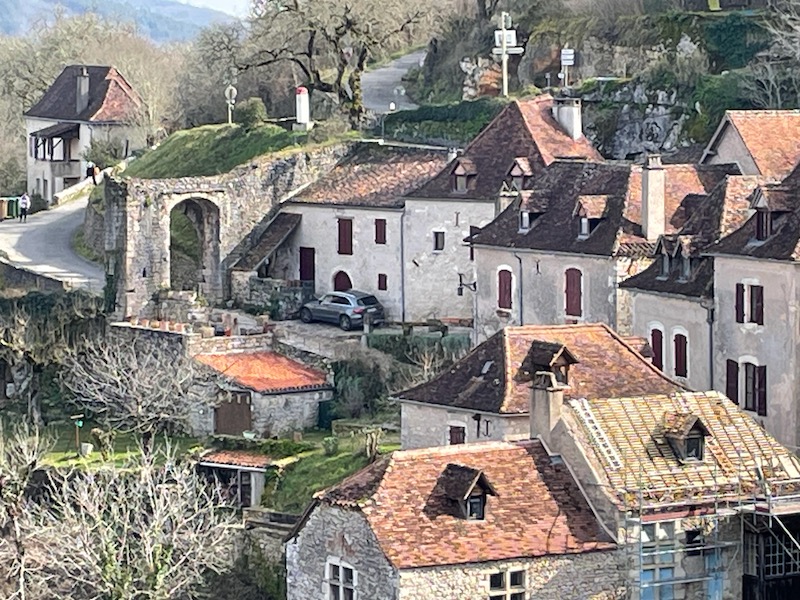Our Blog - Snow Trip 2025 - Saint-Cirq-Lapopie, France
I will start with the trivia information about being voted the "Favorite Village of the French". Starting in 2012, a series was broadcast where several villages were shown and the public was allowed to vote for their favorite. There is no official call for applications for the "Village favoris des Français". Villages are added at the request of the mayor, the tourist office, or even residents themselves. Saint-Cirq-Lapopie won in the initial show in 2012. Looking at the list, I think we've been to 6 of the winning villages across France. The show has gradually lost viewers, from a high in 2013 the 2nd year (of 5.5 million) down to just over 1.5 million in 2024.
The medieval village clings to a cliff and you can see the elevation changes in some of the pictures. In the Middle Ages, the town was shared by 3 feudal dynasties: the Lapopie, the Gourdon, and the Cardaillac. As a result, several castles and fortified houses made up the Lapopie fort and dominated the village. Below the fort, the village streets have a number of old houses preserved, whose stone or half-timbered facades mostly date from the 13th to the 16th centuries.
I have several random pictures trying to show the medieval streets and some of the houses. Around this first square, there are houses with arcades and half-timbering from the 13th and 14th centuries. Many have the ground-floor arched opening, where shops would have been in the Middle Ages.
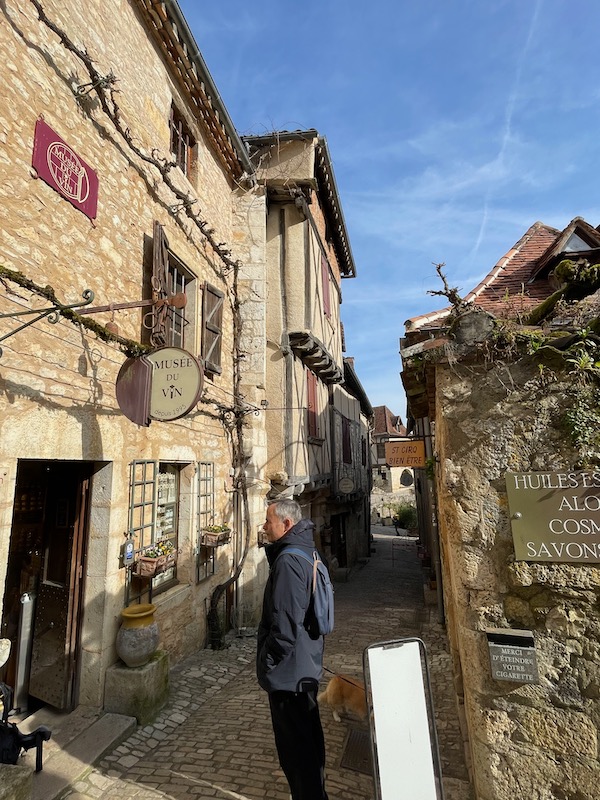
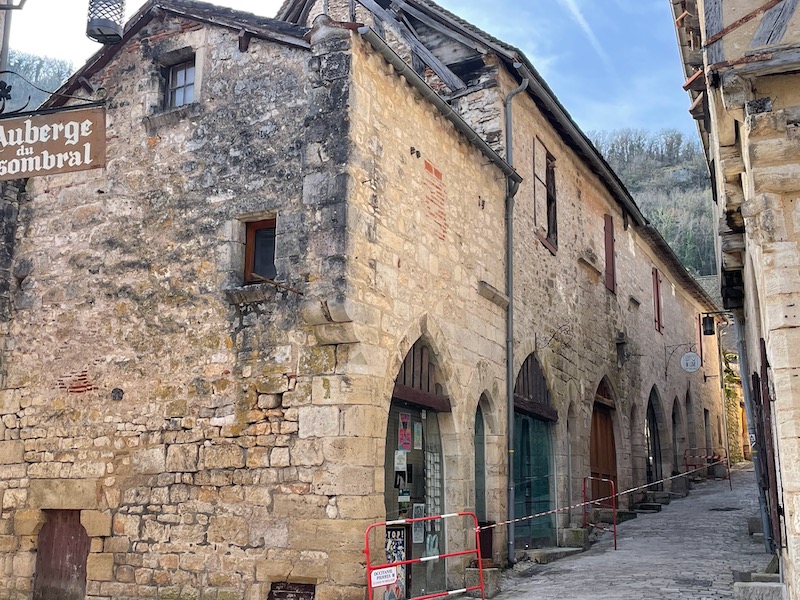

At the highest point of the cliff is "the popie", which comes from an old Occitan word for a promontory in the shape of a breast. So one of the fuedal dynasties, the "Lapopie" comes from this (La Popie meaning "the promontory"). The first castle was built here in the 10th century and remodeled in the 12th century. The foundations of the main tower and the seigneurial dwelling that dominated the fort remain, as well as the remains of a fortified gate to the enclosure. The summit of the rock and the belvedere below offer views over the entire valley.
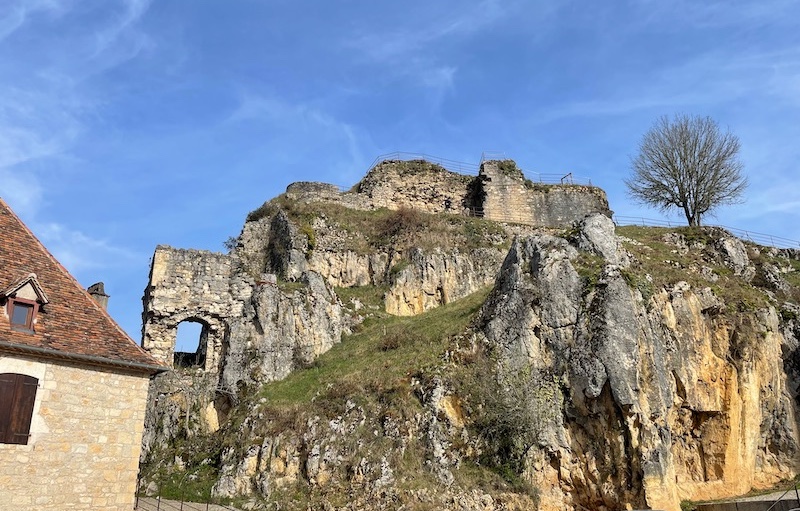

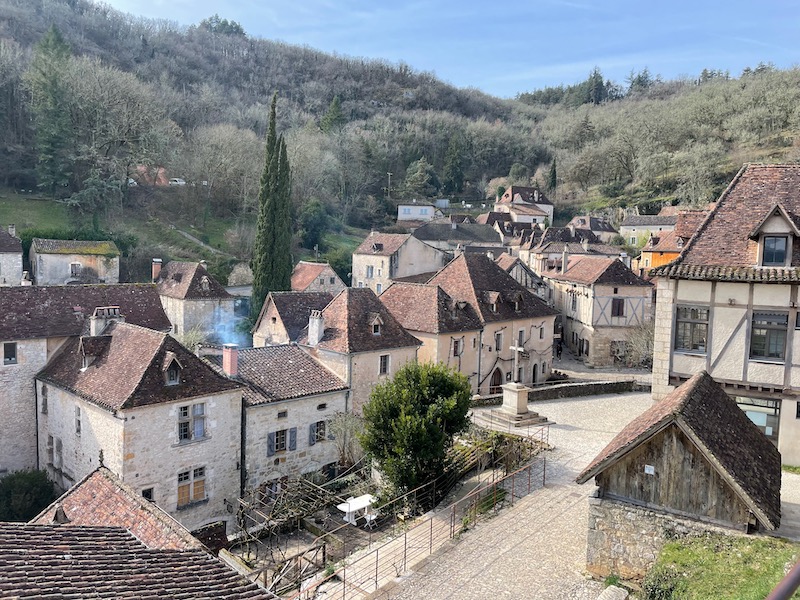
Between the fort and the church (that you will see next) are the ruins of the Cardaillac Castle. It was a fortified residence with a main building supported by a Romanesque keep dating back to the beginning of the 13th and the 14th centuries. It was "modernized" in the 15th century, before being gradually abandoned by the lords, following several destructions ordered by Louis XI, Charles VIII, and Henry of Navarre (destroying castles was something that seems to have been pretty common back then!).
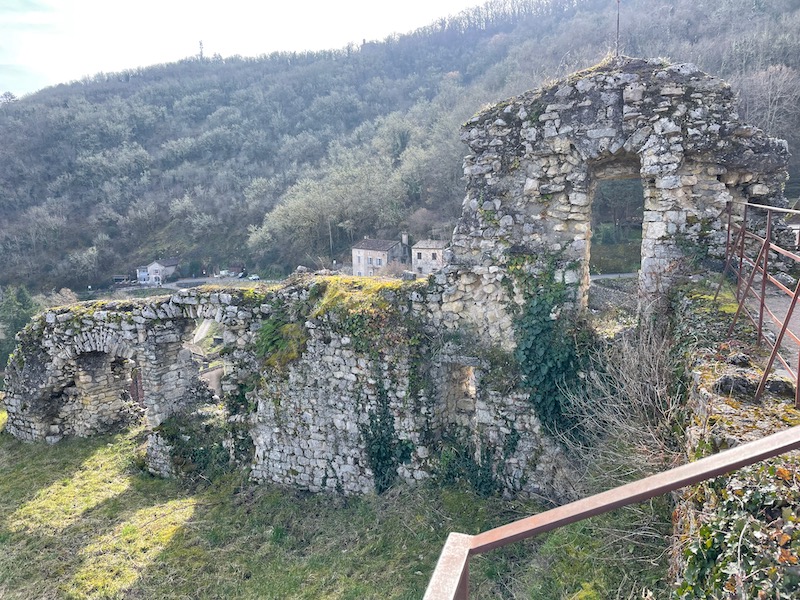
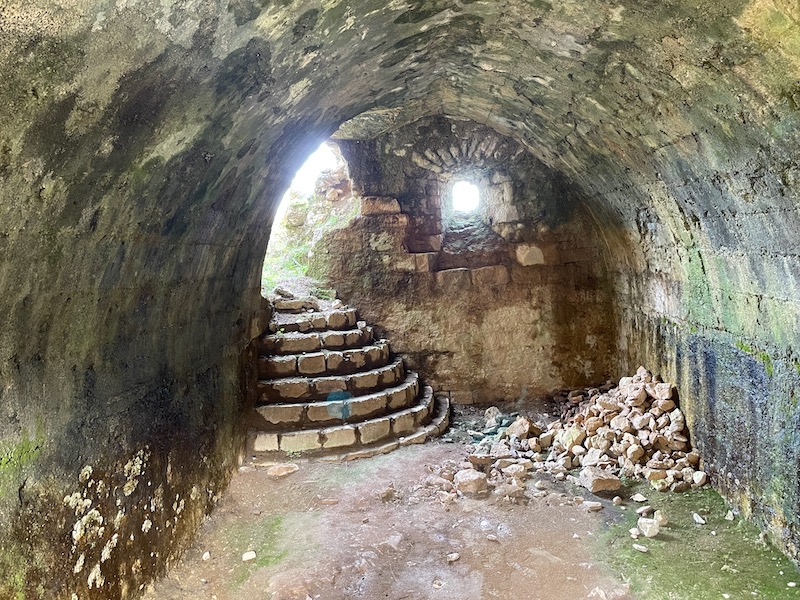
The church of Saint-Cirq Lapopie is dedicated to Saint Cyr (or Saint Cirq, which is the origin of the "Cirq" part of the town name). He was the youngest martyr of Christianity, being just 3 or 4 when he was killed and then martyred. His mother had fled from modern-day Turkey when the Roman Emperor Diocletian decreed a terrible persecution against Christians. Taking refuge in the town of Tarsus, she was arrested and tortured for refusing to give up her Christian idols. The young boy also cried out that he was a Christian and when the governor attempted to hold him, he fought back with his fists. The governor threw him down a set of steps (or against a wall depending on the story) where he died instantly. In paintings, he is almost always shown with his mother, Juliette. This Gothic church was built in 1522, encompassing an old Romanesque parish church.
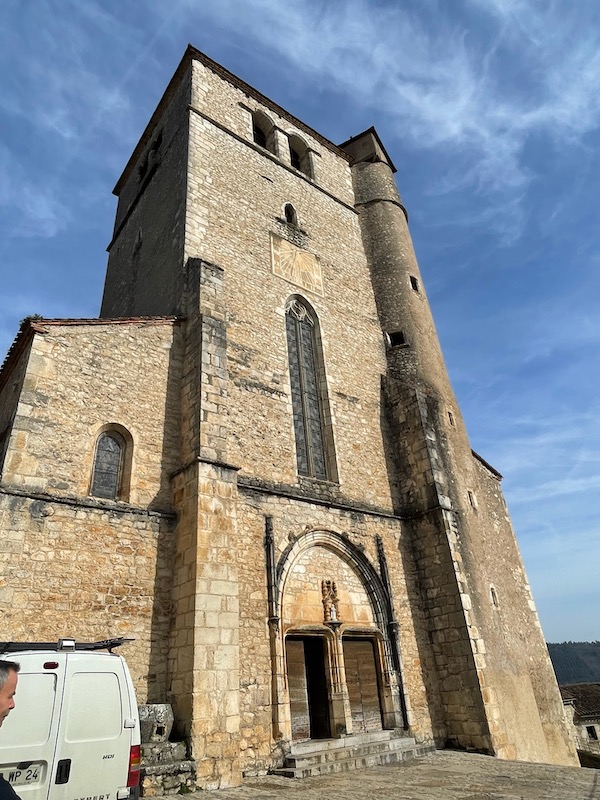
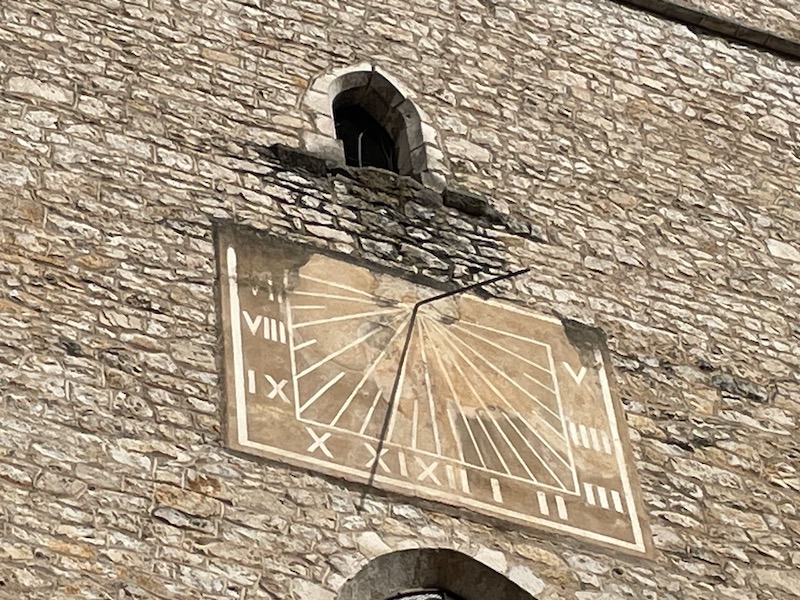
Inside, you can clearly see the Gothic vaults.
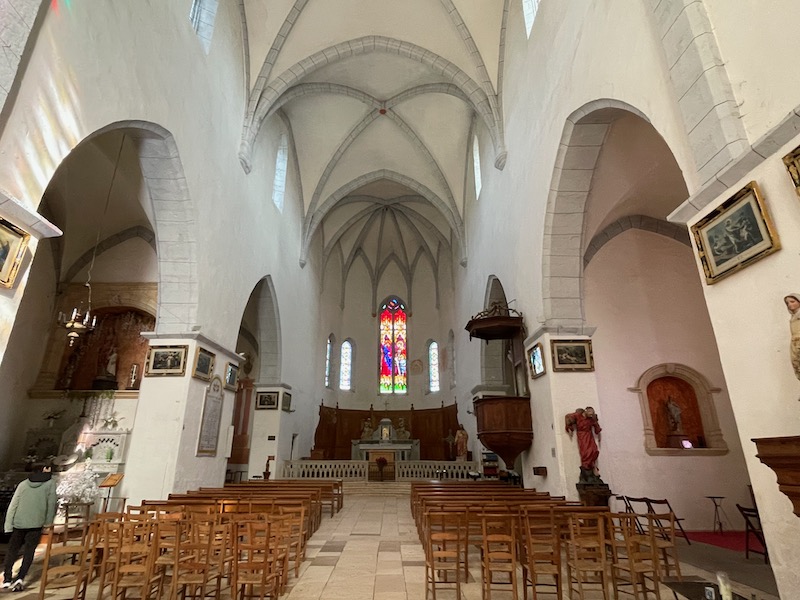
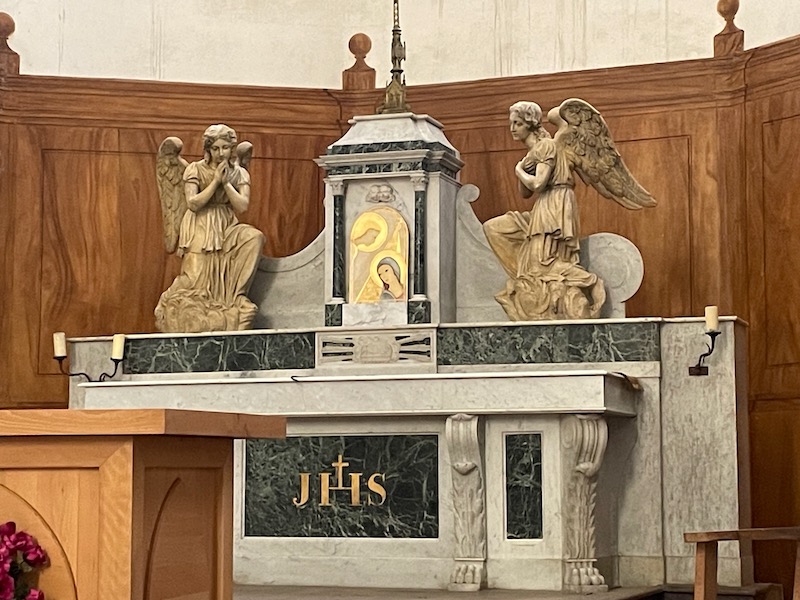
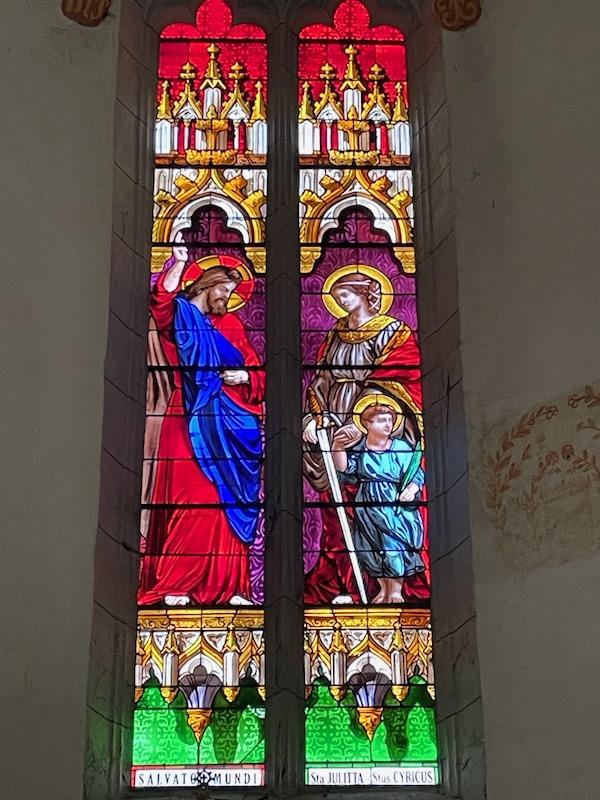
In a few places, you can see what remains of some wall paintings from the 13th century.
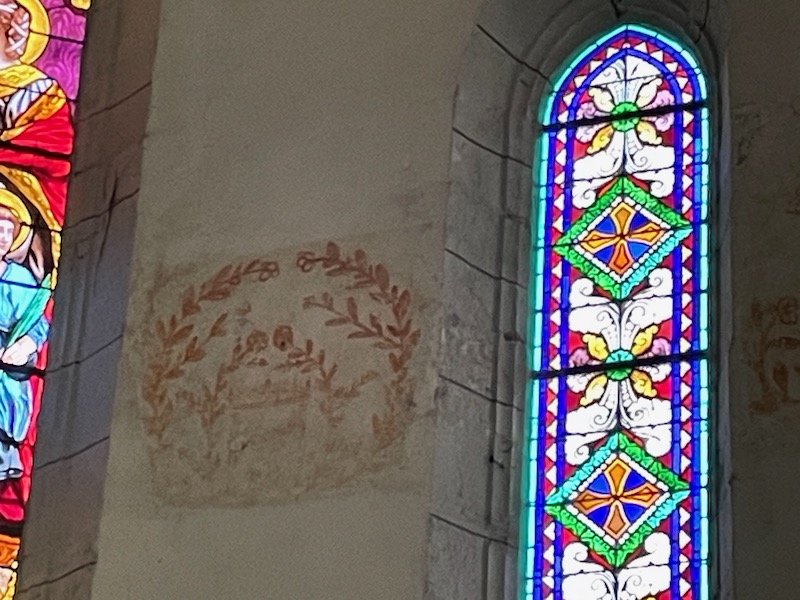
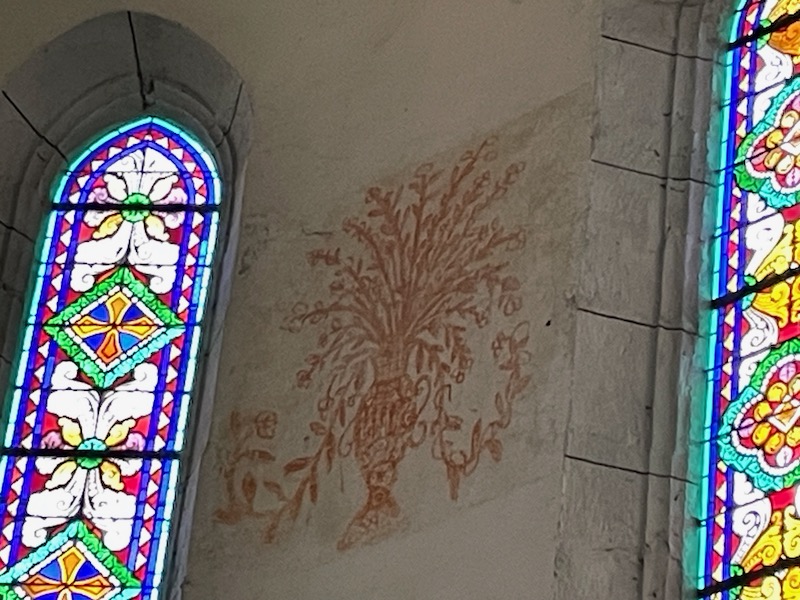
I think this is what remains of this Romanesque chapel, based on the rounded windows. Above one of the windows is another 13th century wall painting and then some copies of 13th century paintings that are no longer visible.
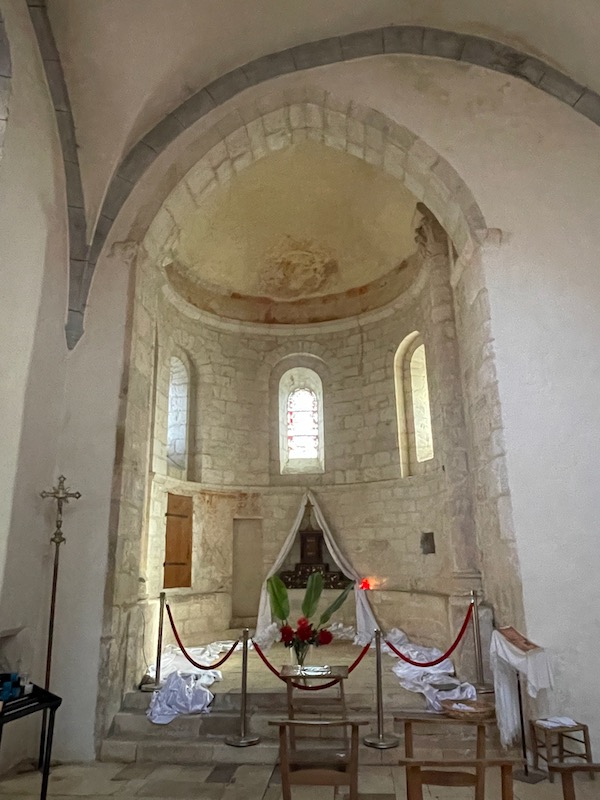
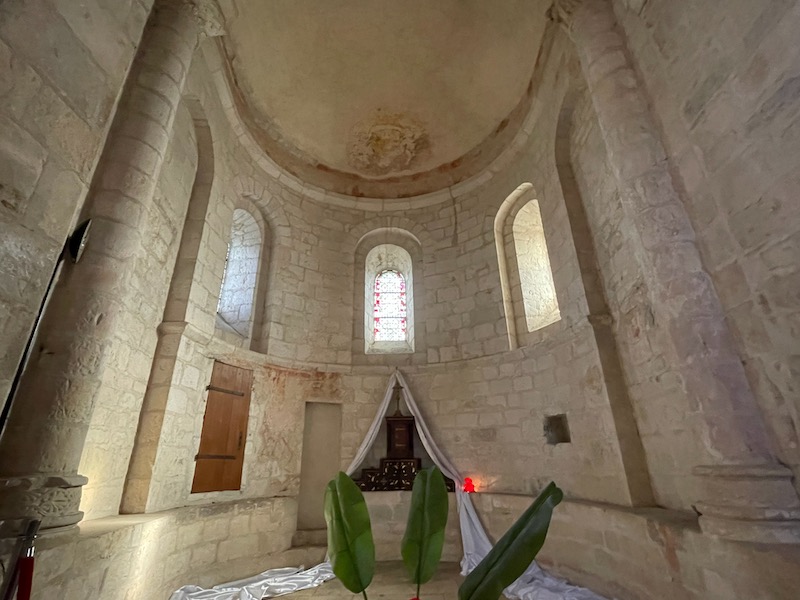
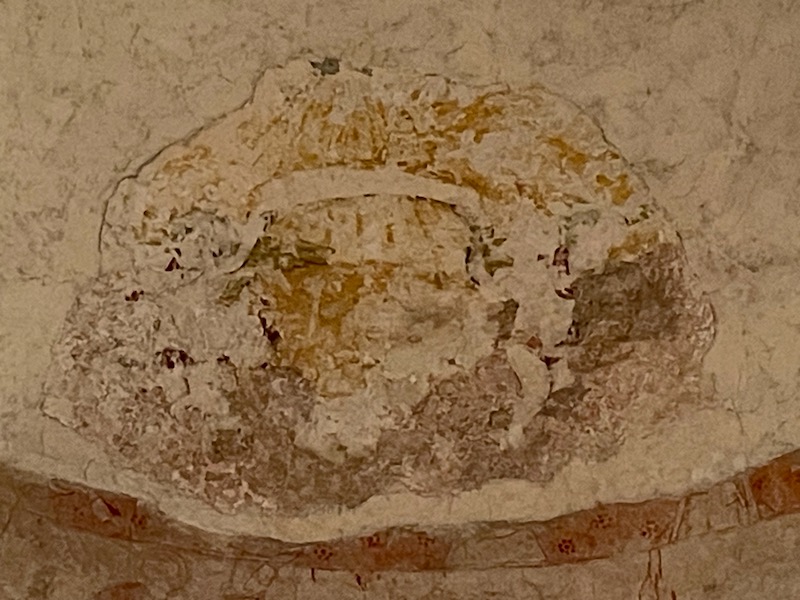
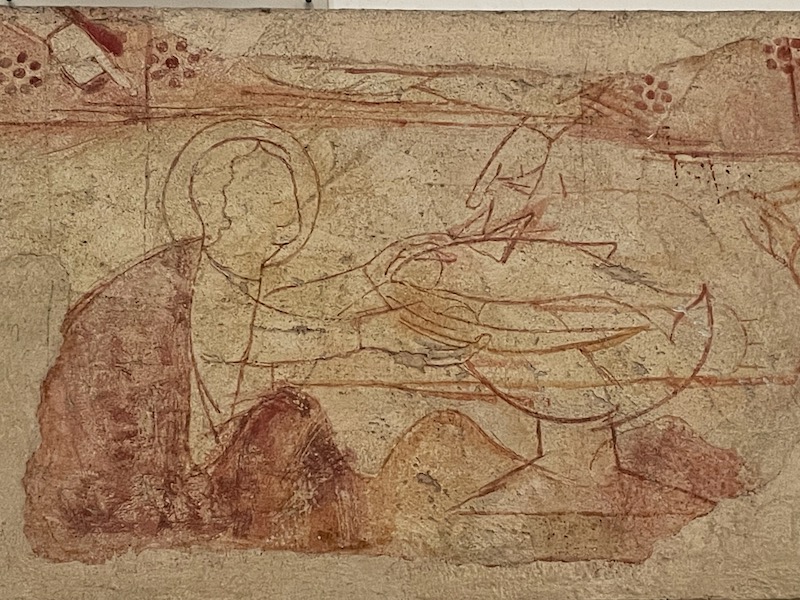
There is a small statue of Saint Jacques de Compostelle, as this is on one of the main routes of this pilgrimage route through France.
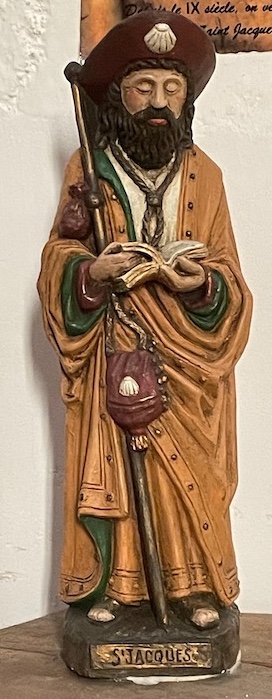
The Maisons Daura is a 13th-century medieval house with tri-lobe arched windows. It was once the studio of the Spanish painter, Pierre Daura. He visited the village while on his honeymoon in 1929 and he and his wife bought this house and moved here in 1930. He and his wife moved to Virginia in 1939 and became US citizens in 1943. They lived in Virginia the rest of their lives, both dying in the 1970's. Today, the house here in Saint-Cirq-Lapopie is an international artists’ residence.
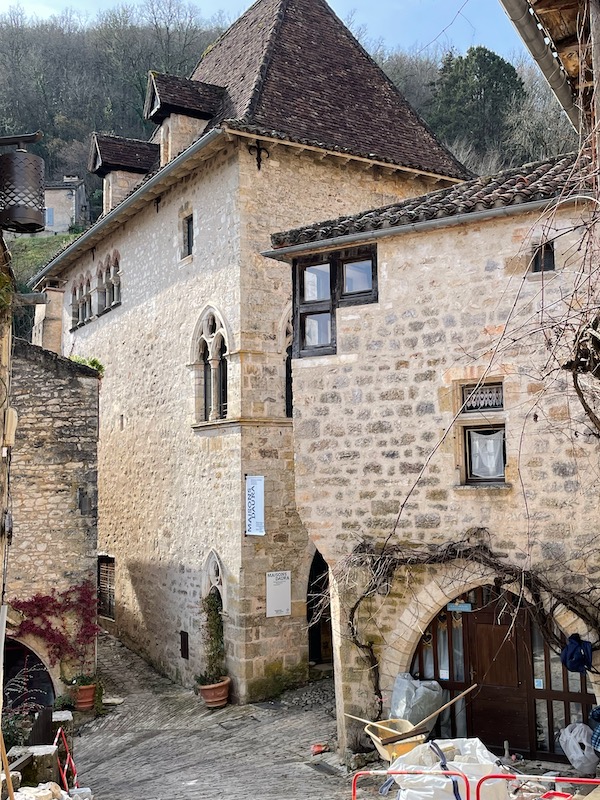
Another old house, this one dates from the 12th and 13th centuries. It is called the Breton House and is characterized by the combination of a dwelling and a tower. It has Gothic windows and is representative of the knights’ houses that were near the fort. This house is the oldest in the village, and was once the home of the surrealist writer, André Breton.
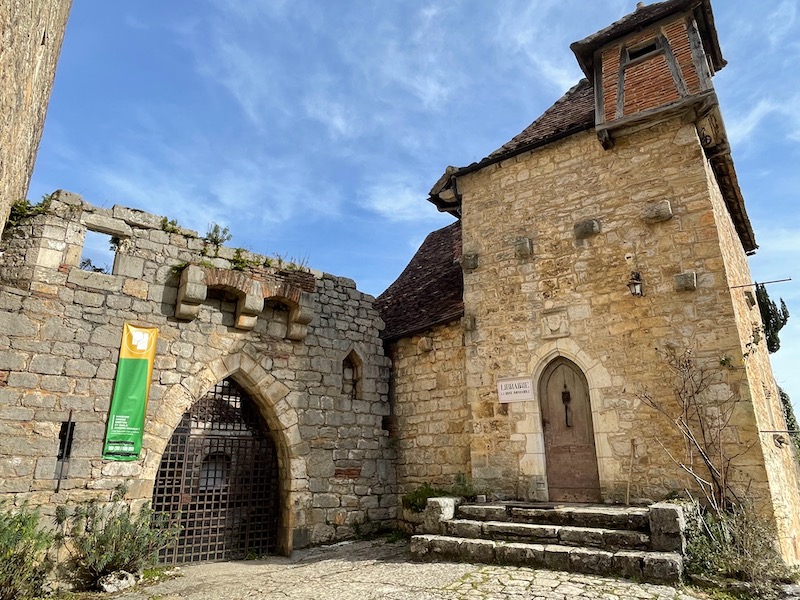
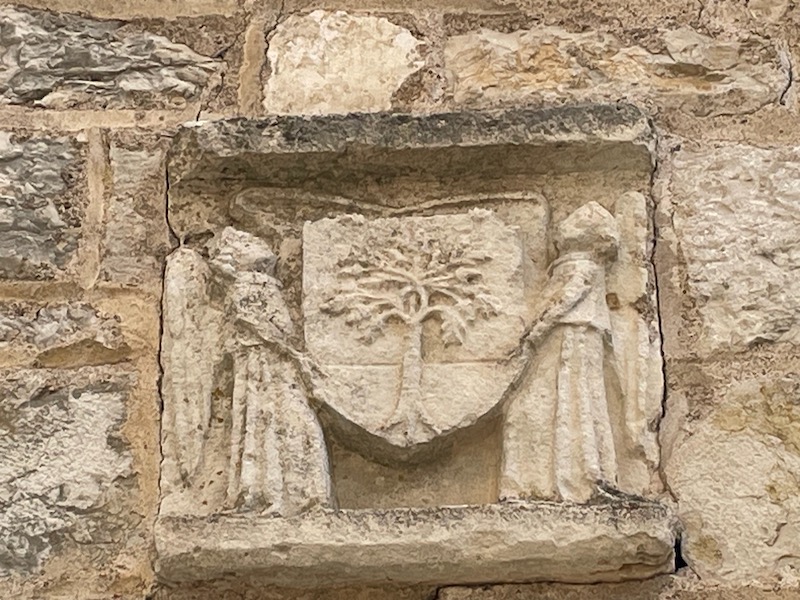
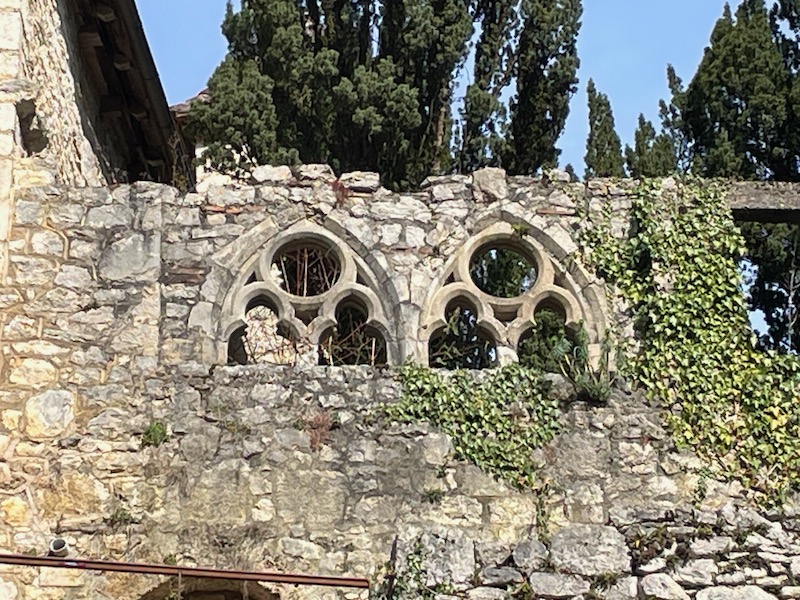
And we have made our way to the other end of the village, with what is left of the Porte de Rocamadour.
